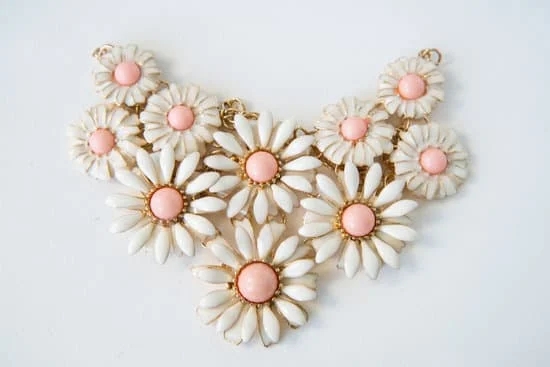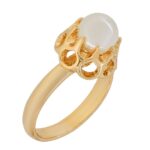Diamonds have long captivated the human imagination and adorned jewelry pieces across cultures and generations. But what exactly does a diamond symbolize when it is featured on jewelry? The answer goes far beyond its sparkling beauty and monetary value. Diamonds hold a profound symbolical significance that transcends time, geography, and belief systems. In this article, we will delve into the depths of diamond symbolism and explore its various meanings in different contexts.
Throughout history, diamonds have been associated with wealth, power, and status. They have adorned the crowns of kings and queens, symbolizing their reign and authority. Diamonds have also been coveted as an investment of immense value, passed down through generations as heirlooms. But beyond material wealth, diamonds possess a spiritual meaning that resonates across cultures. They are regarded as symbols of purity, enlightenment, and divine connection.
The enduring link between diamonds and love cannot be ignored. Diamond engagement rings have become synonymous with romantic proposals and lifelong commitments. These precious gemstones are seen as everlasting symbols of love and devotion. Furthermore, diamonds are often associated with strength and resilience. Just as diamonds are forged under immense pressure to become resilient gems, they serve as reminders to overcome challenges in life.
In popular culture and media, diamonds are often portrayed as symbols of femininity and empowerment. From iconic Hollywood films to music videos featuring glamorous stars dripping in diamonds, these gemstones have become synonymous with confidence and achievement for many women. The rise of diamond self-purchasing has further underscored their association with female empowerment.
As we embark on this exploration of diamond symbolism on jewelry, we will delve into its historical roots, spiritual connotations, representations of love and romance, connections to strength and resilience, cultural variations worldwide, as well as the impact of different diamond shapes and characteristics on their overall meaning. Ultimately, this article aims to unravel the enduring symbolism behind diamonds in jewelry while encouraging readers to embrace their unique power in conveying messages of love, strength, and personal empowerment.
A Brief History of Diamond Symbolism
Diamonds have been revered and desired for centuries, with their symbolism evolving throughout different cultures and historical periods. In this section, we will explore the rich history of diamond symbolism and its association with wealth, power, and status.
Tracing the Cultural and Historical Significance
Diamonds have held a significant place in various societies, particularly among royalty and the upper classes. In ancient civilizations such as Ancient Egypt and Rome, diamonds were seen as a symbol of wealth and luxury. They were reserved exclusively for rulers, high-ranking officials, or individuals of noble birth. The rarity and brilliance of diamonds made them highly coveted status symbols.
During the Renaissance period in Europe, diamonds gained even more cultural significance. They became closely associated with the concept of divine power and were often worn by religious figures such as popes and bishops to symbolize their connection to God.
The Association with Wealth, Power, and Status
One of the main reasons for diamonds’ association with wealth and power is their scarcity. Diamonds are formed deep within the Earth’s mantle under intense heat and pressure over millions of years. This rarity has made them highly valuable throughout history.
Additionally, diamonds’ durability also contributes to their symbolic meaning. As one of the hardest materials on Earth, diamonds represent strength and endurance – qualities that are often associated with people in positions of power or authority.
Throughout history, diamonds have been worn by monarchs and rulers as a way to display their position in society. From crowns adorned with precious gemstones to elaborate diamond jewelry collections passed down through generations, these symbols of opulence served as tangible displays of wealth and influence.
The Spiritual Meaning of Diamonds
Diamonds have long been revered for their spiritual and metaphysical properties in various belief systems. The spiritual meaning of diamonds encompasses ideas of purity, enlightenment, and divine connection. In many cultures, diamonds are believed to possess unique qualities that can enhance one’s spiritual journey and elevate their consciousness.
Diamonds as Symbols of Purity
One of the primary spiritual meanings associated with diamonds is purity. Diamonds are known for their exceptional clarity and brilliance, which is often seen as a reflection of inner purity and spirituality. This symbolism can be found in ancient Hindu and Buddhist traditions, where diamonds are regarded as sacred gems that represent spiritual awakening and the cleansing of the soul.
In these belief systems, diamonds are believed to help individuals let go of negative energies and thoughts, allowing them to achieve a state of pure consciousness. The diamond’s ability to reflect light is also seen as symbolic of its potential to illuminate the mind and bring clarity to one’s thoughts.
Diamonds as Symbols of Enlightenment
Diamonds are often associated with enlightenment due to their remarkable ability to refract light into its full spectrum of colors. This characteristic has led many religious and philosophical traditions to view diamonds as symbols of spiritual illumination.
In some Eastern philosophies, such as Zen Buddhism, diamonds represent the unbreakable nature of enlightenment. Just like a diamond cannot be easily shattered or destroyed, an enlightened individual is believed to possess unwavering wisdom and insight in the face of life’s challenges.
Diamonds as Symbols of Divine Connection
Many cultures believe that diamonds hold a strong connection to the divine realm. In ancient Ayurvedic practices, for example, diamonds are thought to be conduits for divine energy that can help facilitate communication with higher beings or deities.
The association between diamonds and divine connection can also be seen in esoteric traditions such as crystals healing and New Age spirituality. Some practitioners believe that diamonds have the ability to amplify one’s spiritual energies and serve as a channel for divine guidance and protection.
Overall, the spiritual meaning of diamonds encompasses purity, enlightenment, and divine connection. These symbolic qualities make diamonds not only a cherished gemstone in jewelry but also a powerful tool for those seeking spiritual growth and transformation. Whether worn as a personal talisman or passed down as an heirloom, diamond jewelry carries a profound spiritual significance that transcends its physical beauty.
Diamonds as Symbols of Love and Romance
Diamonds have long been associated with love and romance, symbolizing the eternal and unbreakable bond between two individuals. This section will explore the enduring link between diamonds and love, examining their symbolism in engagement rings and wedding bands, as well as discussing the cultural expectations and emotional associations with these sparkling gemstones.
The exchange of diamond engagement rings has become a deeply ingrained tradition in many cultures. The giving of a diamond ring represents a promise of commitment and love, with its timeless beauty reflecting the everlasting nature of the couple’s relationship. The diamond is often placed on the fourth finger of the left hand, as it was believed to have a direct connection to the heart through a vein called Vena Amoris or “vein of love”.
The symbolism of diamonds in wedding bands is also significant. The circle shape of a ring represents eternity, with no beginning or end, mirroring the endless love between partners. When combined with diamonds, wedding bands become even more meaningful, signifying an unbreakable union filled with love and devotion.
Culturally, there are high expectations associated with diamond rings as symbols of love. In Western societies especially, diamonds are seen as an expression of one’s devotion and financial investment in a relationship. While some argue that this expectation may put unnecessary pressure on couples, there is no denying that diamond engagement rings hold immense sentimental value for many individuals.
Related Topics
– The History of Diamond Engagement Rings
– Cultural Variations in Diamond Wedding Bands
– Alternative Gemstones for Symbolizing Love
Diamonds as Symbols of Strength and Resilience
Diamonds have long been admired for their strength and durability, making them a perfect symbol of strength and resilience. Throughout history, diamonds have been associated with these qualities and have served as a source of inspiration for individuals facing challenges and adversity. Here are some ways in which diamonds represent strength and resilience:
- Enduring Nature: Diamonds are formed under intense pressure and heat deep within the Earth’s crust over millions of years. This process gives them their extraordinary hardness and remarkable endurance. In this sense, diamonds reflect the ability to withstand challenges, just like how they are formed under extreme conditions.
- Symbolic Reflection: Beyond their physical properties, diamonds also hold symbolic significance that mirrors inner strength and resilience. The brilliance and sparkle of a diamond serve as a reminder that even in the darkest times, there is always light to be found. Diamonds can inspire individuals to stay strong, shine bright, and persevere through difficult situations.
- Transformational Power: The journey from rough diamond to polished gem involves multiple stages of cutting, shaping, and faceting. Similarly, life often presents us with obstacles that require transformation and growth. Diamonds embody the idea that through perseverance and self-improvement, one can overcome challenges and emerge stronger than before.
In popular culture, diamonds are often used as symbols of strength and resilience. They are frequently featured in inspirational quotes such as “diamonds are created under pressure” or “diamonds are made to last forever.” These messages propagate the belief that just like diamonds, individuals have the capacity to endure hardships and emerge triumphant.
Diamonds as Symbols of Femininity and Empowerment
Throughout history, diamonds have been associated with femininity and empowerment. The portrayal of diamonds in popular culture and media has reinforced this connection, highlighting the strength and beauty that diamonds represent for women. This section will analyze the portrayal of diamonds in popular culture and media, discussing how they are linked to femininity and empowerment.
The rise of diamond self-purchasing has been a significant factor in reshaping the meaning of diamonds for women. In the past, diamonds were often acquired through traditional channels such as engagements or as gifts from men. However, today many women are actively choosing to buy diamond jewelry for themselves as a symbol of their independence and empowerment. This trend reflects a shift in societal norms where women are asserting their autonomy and financial freedom.
The portrayal of diamonds in popular culture has also played a role in associating them with femininity and empowerment. Diamonds are often depicted as glamorous accessories worn by powerful women, such as celebrities and iconic figures. These representations contribute to the idea that diamonds are not only symbols of luxury but also symbols of strength, success, and achievement for women.
| Diamonds as Symbols of Femininity | Diamonds as Symbols of Empowerment |
|---|---|
| Represent beauty, elegance, and grace traditionally associated with femininity | Symbolize strength, success, and achievement for women |
| Connected to romantic love stories | Reflect financial independence and assertiveness |
| Worn by famous female figures in popular culture | Inspire confidence and self-assurance |
Different Diamond Shapes and their Symbolism
The shape of a diamond is an important factor in the overall symbolism and message conveyed by a piece of jewelry. Each diamond shape has its own unique characteristics and associations, which can affect how the jewelry is perceived and the meaning it holds.
One of the most popular diamond shapes is the round brilliant cut. This classic shape is known for its exceptional brilliance and fire, making it a symbol of eternal love and perfection. The round shape represents unity, wholeness, and infinity, making it a popular choice for engagement rings and other romantic jewelry.
Another widely recognized diamond shape is the princess cut. With its square or rectangular shape and pointed corners, the princess cut represents strength, boldness, and adventure. It conveys a sense of modernity and sophistication, making it a favored option for those who want a blend of tradition and contemporary style.
The emerald-cut diamond stands out with its long, rectangular shape and step-cut faceting. This elegant shape has a vintage feel to it and is associated with timeless beauty and refinement. The emerald-cut symbolizes clarity, balance, and serenity, making it an excellent choice for those seeking understated elegance in their jewelry.
Other popular diamond shapes include pear-shaped diamonds (symbolizing creativity), oval diamonds (representing individuality), marquise diamonds (symbolizing endurance), radiant-cut diamonds (associated with joyfulness), and heart-shaped diamonds (symbolizing love).
It’s essential to consider the symbolism behind different diamond shapes when selecting jewelry as they can enhance the intended message or meaning behind your piece. Whether you choose a round brilliant cut to represent eternal love or an emerald cut to convey tranquility, each diamond shape adds depth to the symbolism embodied in your jewelry choice.
Decoding Diamond Color and Clarity Symbolism
When it comes to diamonds, color and clarity play a significant role in determining their value and symbolism. The color of a diamond can range from completely colorless to various shades of yellow or brown. On the other hand, clarity refers to the presence of any internal or external flaws, known as inclusions and blemishes, respectively. Understanding the symbolism behind these characteristics can provide insight into the perceived value and meaning of diamond jewelry.
In terms of color symbolism, completely colorless diamonds are considered the most valuable and are often associated with purity, perfection, and transcendence. They represent a sense of elegance and sophistication that is highly sought after in jewelry pieces. As the color grade moves down the scale towards yellow or brown tones, the symbolism shifts to reflect warmth, richness, and uniqueness. These colored diamonds are often chosen for their individuality and ability to make a bold statement.
When it comes to clarity symbolism, diamonds with few or no visible flaws are highly prized due to their rarity. These clear diamonds symbolize purity of thought, transparency, and an unobstructed path towards enlightenment. On the other hand, diamonds with visible inclusions or blemishes may be viewed as having character or uniqueness. They can serve as a reminder that imperfections can enhance beauty and add depth to both individuals and relationships.
It is important to note that personal preferences also come into play when decoding diamond color and clarity symbolism. Some individuals may prioritize flawless clarity for its pure aesthetics, while others may find beauty in unique colors or inclusions that tell a story. Ultimately, what matters most is finding a diamond that resonates with your own values and symbolizes something meaningful to you.
By understanding the symbolism behind diamond color and clarity grades, individuals can make informed choices when selecting diamond jewelry that represents their style, personality, or relationships. Whether it be a perfectly colorless stone symbolizing purity and perfection, or a uniquely colored diamond representing individuality and boldness, the symbolism of diamonds is as varied as the individuals who wear them.
The Symbolic Meaning of Diamond Jewelry in Cultures Around the World
According to the Gemological Institute of America (GIA), diamonds have been admired and valued for centuries across different cultures and communities around the world. In this section, we will explore the symbolic meanings of diamond jewelry in various cultures, highlighting unique traditions and rituals associated with diamonds.
In Indian culture, diamonds have a rich history and are considered auspicious and sacred. Diamonds are often worn as part of traditional bridal jewelry sets, symbolizing purity, abundance, and good fortune. They are also believed to bring clarity of mind and enhance spiritual awareness. The Koh-i-Noor diamond, now part of the British Crown Jewels, is said to be an embodiment of power and prosperity in Indian folklore.
Moving to China, the symbolism of diamonds is closely tied to yin and yang energies. Diamonds represent strength, righteousness, and balance in relationships. Chinese brides often wear diamond jewelry on their wedding day to attract positive energy and long-lasting love. Additionally, diamonds are seen as a symbol of wealth and social status in Chinese culture.
In Western societies, particularly in the United States and Europe, diamonds are strongly associated with love and commitment due to their use in engagement rings. The tradition of proposing with a diamond ring dates back to ancient Rome but gained popularity during the 20th century through marketing campaigns by diamond companies like De Beers. Today, giving a diamond engagement ring is seen as a symbol of eternal love and devotion.
Further south in Africa, where many natural diamonds originate from, these precious gemstones hold cultural significance beyond their aesthetic value. For some African tribes such as the Zulu people in South Africa or Maasai warriors in Kenya, diamonds represent bravery and courage. They are used as decorative elements during traditional ceremonies or incorporated into traditional jewelry designs that convey pride and heritage.
As seen throughout these examples from different cultures around the world, diamond jewelry carries diverse symbolic meanings that reflect societal values and beliefs. Whether it represents purity, power, love, or cultural heritage, the allure and symbolism of diamond jewelry continue to captivate people across the globe.
| Culture | Symbolic Meaning |
|---|---|
| Indian | Purity, abundance, good fortune, spiritual awareness |
| Chinese | Strength, righteousness, balance in relationships |
| Western (United States and Europe) | Eternal love, devotion |
| African (Various tribes) | Bravery, courage, pride, heritage |
Conclusion
In conclusion, the symbolic meaning of diamonds in jewelry is deeply rooted in history, spirituality, love, strength, femininity, and culture. Throughout civilizations and societies, diamonds have been associated with wealth, power, and status. Their spiritual significance lies in their connection to purity, enlightenment, and divine connection.
Diamonds have also become a symbol of love and romance, especially in engagement rings and wedding bands. The emotional association and cultural expectation tied to diamond rings make them enduring symbols of commitment and affection.
Furthermore, diamonds are seen as symbols of strength and resilience. Their formation under intense pressure reflects the inner strength needed to overcome challenges and adversity. Diamonds can serve as reminders for individuals to stay strong in difficult times.
In popular culture and media, diamonds have often been portrayed as a representation of femininity and empowerment. The rise of diamond self-purchasing has further empowered women by allowing them to buy diamond jewelry for themselves as a symbol of their own achievements.
Additionally, the choice of diamond shape can influence the overall meaning and message of a jewelry piece. Different shapes hold different symbolism: round diamonds signify eternity and unity; princess cut diamonds represent modernity and sophistication; emerald cut diamonds exude elegance and timeless beauty. Similarly, the color and clarity grades of a diamond contribute to its symbolism. Each characteristic affects the perceived value and symbolism of the stone.
Ultimately, regardless of cultural or regional differences in symbolism attributed to diamond jewelry around the world, diamonds continue to hold enduring symbolic power. They encompass various meanings that transcend time and place.
Whether it be as a representation of love or resilience or an expression of personal empowerment, diamonds have a way of capturing our imagination and emotions. As readers embrace this symbolic power inherent in diamond jewelry, they can find deeper appreciation for these precious gemstones that hold centuries’ worth of stories within their facets.
Frequently Asked Questions
What does 925 with diamond symbol mean?
When you see the marking “925” alongside a diamond symbol, it typically indicates that an item of jewelry is made from sterling silver and set with diamonds. The number 925 is often used to denote the purity of silver in parts per thousand, meaning that the piece contains 92.5% pure silver.
This standard of silver purity has become widely accepted and recognized in jewelry making. Therefore, when combined with a diamond symbol, this marking implies that the item is made from sterling silver and adorned with authentic diamonds.
How are diamonds marked?
Diamonds are often marked or identified using various symbols that help indicate their authenticity and characteristics. One common method of diamond marking is by using a laser inscription on its girdle, which is the outer edge between the top and bottom facets of a diamond.
These inscriptions can include key information such as certification numbers, logos, trademarks, or personal messages that link to specific records or grading reports for the diamond. Furthermore, some jewelers may also use tiny engraved symbols or logos on jewelry settings to indicate the presence of diamonds.
What is the symbol of real diamond?
The most widely recognized symbol associated with real diamonds is the Gemological Institute of America’s (GIA) logo or branding on a diamond grading report or certificate. The GIA is one of the most trusted and respected gemological laboratories worldwide, providing detailed assessments and analysis of precious stones like diamonds.
A GIA diamond report represents an objective evaluation performed by experts who assess various aspects such as carat weight, cut quality, color grade, clarity grade, proportions, symmetry, and fluorescence properties of a diamond. Thus, having a genuine GIA symbol accompanying a diamond provides assurance about its authenticity and quality standards for potential buyers.

Welcome to my jewelry blog! My name is Sarah and I am the owner of this blog.
I love making jewelry and sharing my creations with others.
So whether you’re someone who loves wearing jewelry yourself or simply enjoys learning about it, be sure to check out my blog for insightful posts on everything related to this exciting topic!





